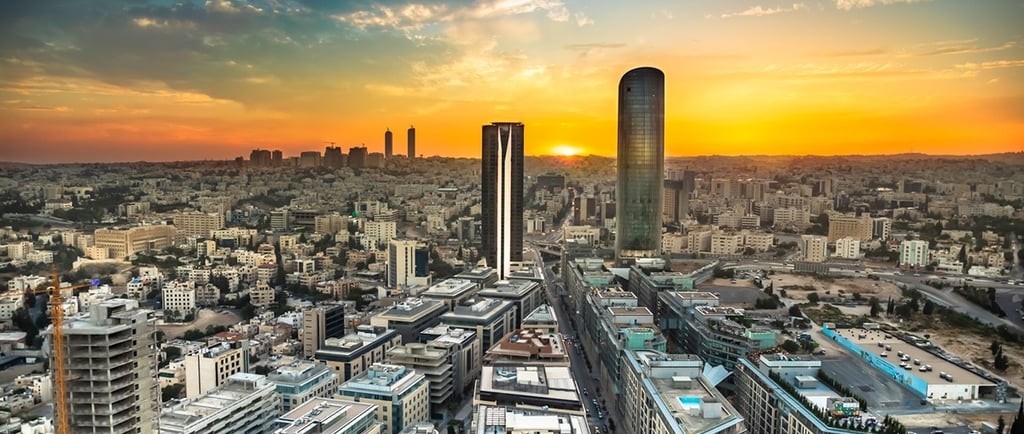Urban Expansion vs. Affordable Housing: Can India Balance Both?
India’s rapid urbanization presents challenges in balancing infrastructure growth with affordable housing. Government initiatives like PMAY-U, ISSR, and rental law reforms aim to address housing shortages, slum redevelopment, and rising costs. However, issues like slow approvals, environmental concerns, and tenant-landlord conflicts persist. A proactive urban planning approach is essential for sustainable and inclusive city development.


India's urbanization has been accelerating since independence, driven by economic growth and the expansion of the private sector. In 1901, only 11.4% of India's population lived in urban areas. Projections suggest that by 2030, over 40% of India's population will be living in cities. However, this rapid urban expansion brings significant challenges, particularly in balancing infrastructure growth with affordable housing.
The Urbanization Boom and Its Challenges
As defined by the World Bank, 38% of India’s population resided in urban areas in 2023, although some demographers are of the opinion that if one were to consider urban characteristics, that number could be at 50%. States vying for investment by easing bureaucratic hurdles are to some extent endangering long-term infrastructure planning and environmental considerations.
We have migrants who move to the cities for the sheer hope of making their fortune. But limited skills and their inability to integrate into the formal sector often push them into urban poverty. Such a vulnerable lot fails to find affordable housing and ends up increasing the slum and informal settlements' growth with poor sanitation, inadequate living conditions, and no access to services.
Infrastructure Struggles and Environmental Concerns
The influx of migrants has exacerbated existing urban challenges, particularly in housing availability and spatial constraints. The shortage of affordable housing is further compounded by inadequate sanitation, poor waste management, and limited access to contraceptives, contributing to overpopulation in urban centers.
Additionally, cities are grappling with traffic congestion, pollution, and climate change-induced challenges such as heat waves, excessive humidity, and flooding. Mumbai and Bengaluru, for instance, are highly vulnerable to flooding due to mismanaged water systems.
Addressing the Housing Crisis
Recognizing these challenges, the government has introduced various initiatives to improve housing accessibility:
1. In-Situ Slum Redevelopment (ISSR)
The Integrated Slum Development System is the urban version of the Pradhan Mantri Awas Yojana-Urban (PMAY-U) and it plans to eliminate slums by giving private builders the opportunity to build formal housing. The strategies of the ISSR are as follows:
A government grant of ₹1,00,000 per slum family to incentivize private developers.
Benefits like increased Floor Space Index (FSI) and Transferable Development Rights (TDR) to make projects profitable.
Flexible zoning regulations to encourage private involvement.
AMRUT, a government project, and SBM, a government infrastructure development initiative, fulfill the task by reconstructing basic city infrastructure, whenever there are no private developers available.
2. Expanding Land for Housing
Urban planning traditionally focuses on central areas, neglecting peripheral regions. To address this, the Ministry of Housing and Urban Affairs (MoHUA) launched a pilot program under AMRUT, training 25 states in land-use planning through Town Planning Schemes (TPS) and Local Area Planning (LAP). This initiative aims to provide serviced land (with water, roads, and electricity) on city fringes to expand affordable housing options.
3. Faster Construction Approvals
The long approval processes, which last 43 months on average, are the main cause of the skyrocketing housing property prices. Changes such as Online Building License Platforms (OBLP) in cities such as Mumbai and Delhi have reduced the approval period from 168 days to 106 days and reduced the transaction costs. Presently, 1,705 cities, including 439 AMRUT cities, have embraced OBPS.
4. Incentivizing Affordable Housing for the Middle Class
For the growth of middle-income affordable housing (₹ 10-45 lakh), the government has come up with:
Income tax and GST benefits for developers.
Construction finance will be made more accessible through Priority Sector Lending (PSL).
The recognition that affordable housing is infrastructure also comes as a boost, as it caters to External Commercial Borrowing (ECB).
5. Credit-Linked Subsidy Scheme (CLSS)
CLSS provides low-interest home loans to Economically Weaker Sections (EWS), Low-Income Groups (LIG), and Middle-Income Groups (MIG) for home construction or enhancement. Subsidies are channeled through nodal agencies like the National Housing Bank and State Bank of India. The digital CLSS Awas Portal (CLAP) ensures transparency and faster application processing.
6. Beneficiary-Led Construction (BLC)
BLC provides ₹1,50,000 per EWS family for self-constructed housing, particularly benefiting small and medium-sized cities. By April 2024, 4.38 million out of 7.49 million sanctioned units had been completed under BLC
7. Affordable Housing in Partnership (AHP)
AHP supports public-private partnerships (PPPs) to construct EWS housing, providing ₹1,50,000 per unit. Projects must contain at least 250 units, with 35% reserved for EWS families. To encourage AHP, states provide public land, reduced stamp duty, and relaxed development control regulations (DCRs). By 2021, AHP contributed 0.83 million completed units.
India’s Rental Housing Paradox
Despite an 18.78 million housing shortage in 2012, 11 million urban houses remain vacant due to low rental yields (3-4.5%) and outdated Rent Control Acts. High tenant-landlord conflicts discourage property owners from renting out spaces, creating an artificial scarcity in the rental market. Reforming rental laws is crucial to resolving this mismatch and improving affordable urban housing availability.
As India's cities continue to expand, the need for affordable housing must be addressed in tandem to ensure sustainable and equitable development. While the government has introduced crucial reforms, challenges in implementation remain. Rather than relying on reactive measures, a shift toward proactive urban planning is essential. By prioritizing inclusive, well-planned urban growth, India can create cities that are not only livable today but also resilient and prepared for future challenges.

